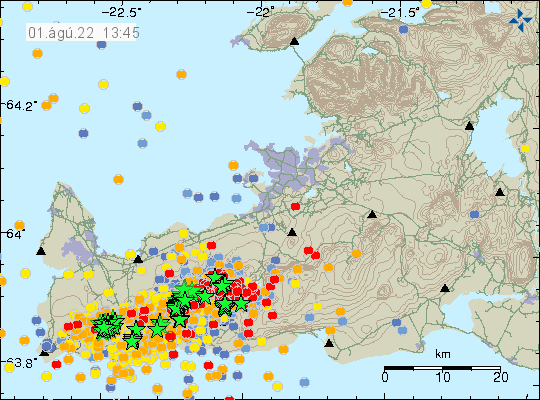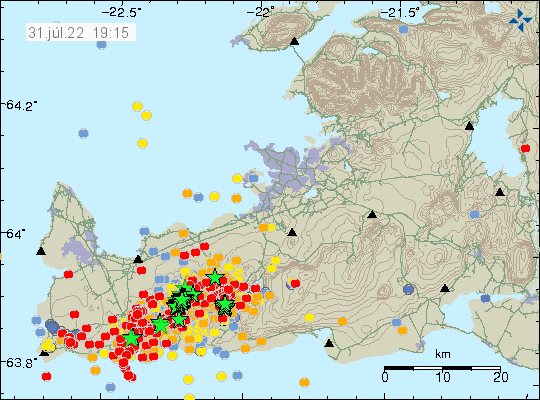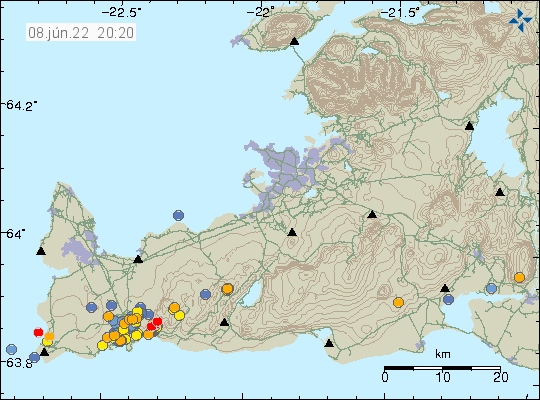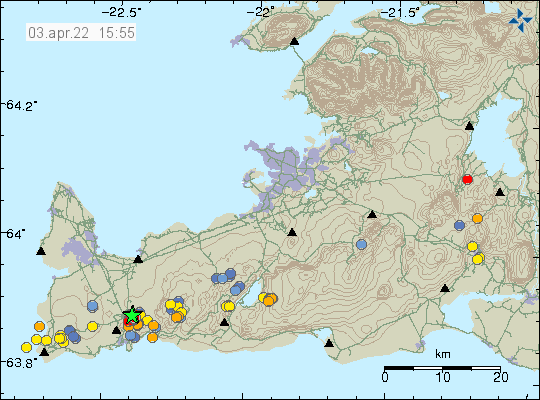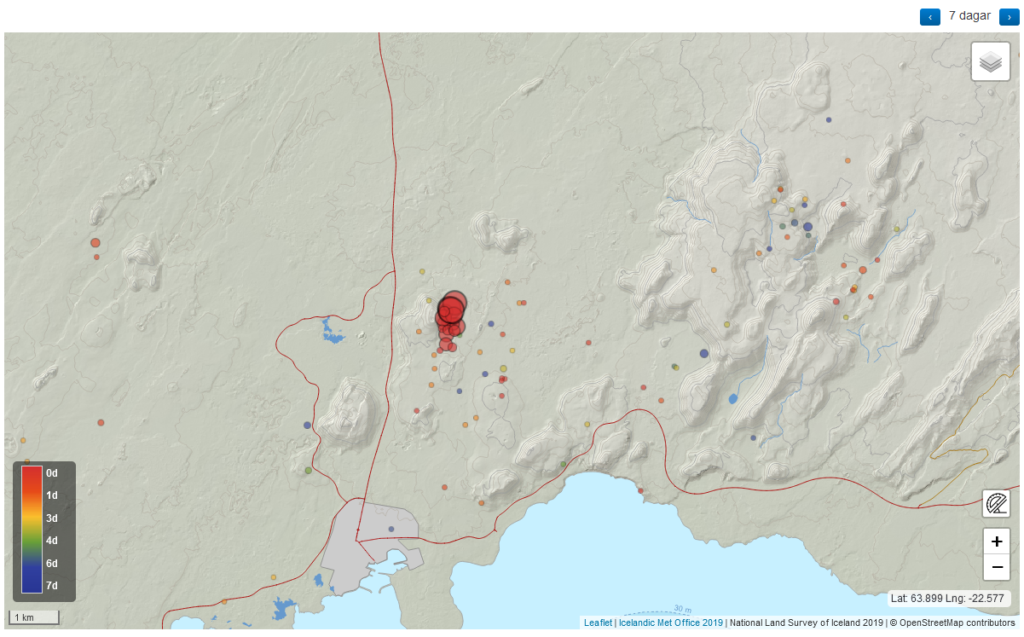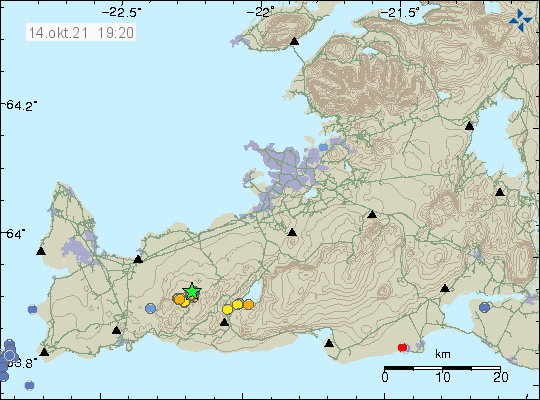This is a short article because the situation changes constantly.
This was not a night where many people in Reykjavík got a good night sleep. A magnitude Mw5,0 earthquake took place at 02:27 UTC and was felt in Reykjavík, few seconds earlier a magnitude Mw4,7 earthquake took place. Earlier three earthquakes with magnitudes of Mw4,3 to Mw4,5 had taken place, this was just around midnight and was also felt in Reykjavík. Over 10 000 earthquakes have been recorded since Saturday when this all started. The earthquake activity during the night was at the western end of Kleifarvatn lake and was for that reason felt clearly in Reykjavík. Minor damage was reported with the earthquake around midnight. Other reports of damage have not been reported so far.
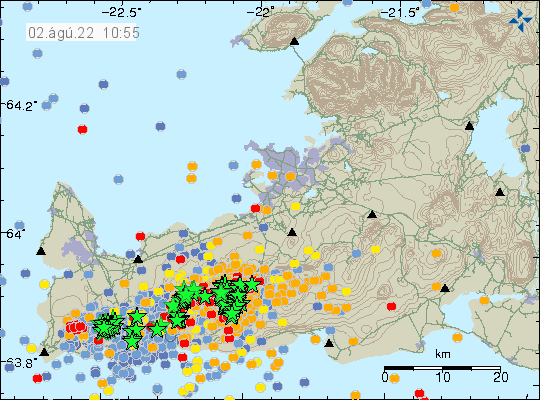
The strong earthquakes during the night where fault earthquakes, that happen because of the inflation that is now taking place north of Fagradalsfjall mountain. GPS data has also been showing a interesting patter. There is now a deflation taking place in Gónhóll and the crater, while that area also seems to be on the move north (?). The 24 GPS data can be viewed here and 8 hours GPS data can be viewed here.
This earthquake activity is going to continue until an eruption starts. When that happens is impossible to know. More stronger earthquakes can be expected in next few hours and days on Reykjanes peninsula.
Donations
Please remember to support my work. That stops me from being broke and I don’t need many donations to stop being broke. Thanks for the support. 🙂

